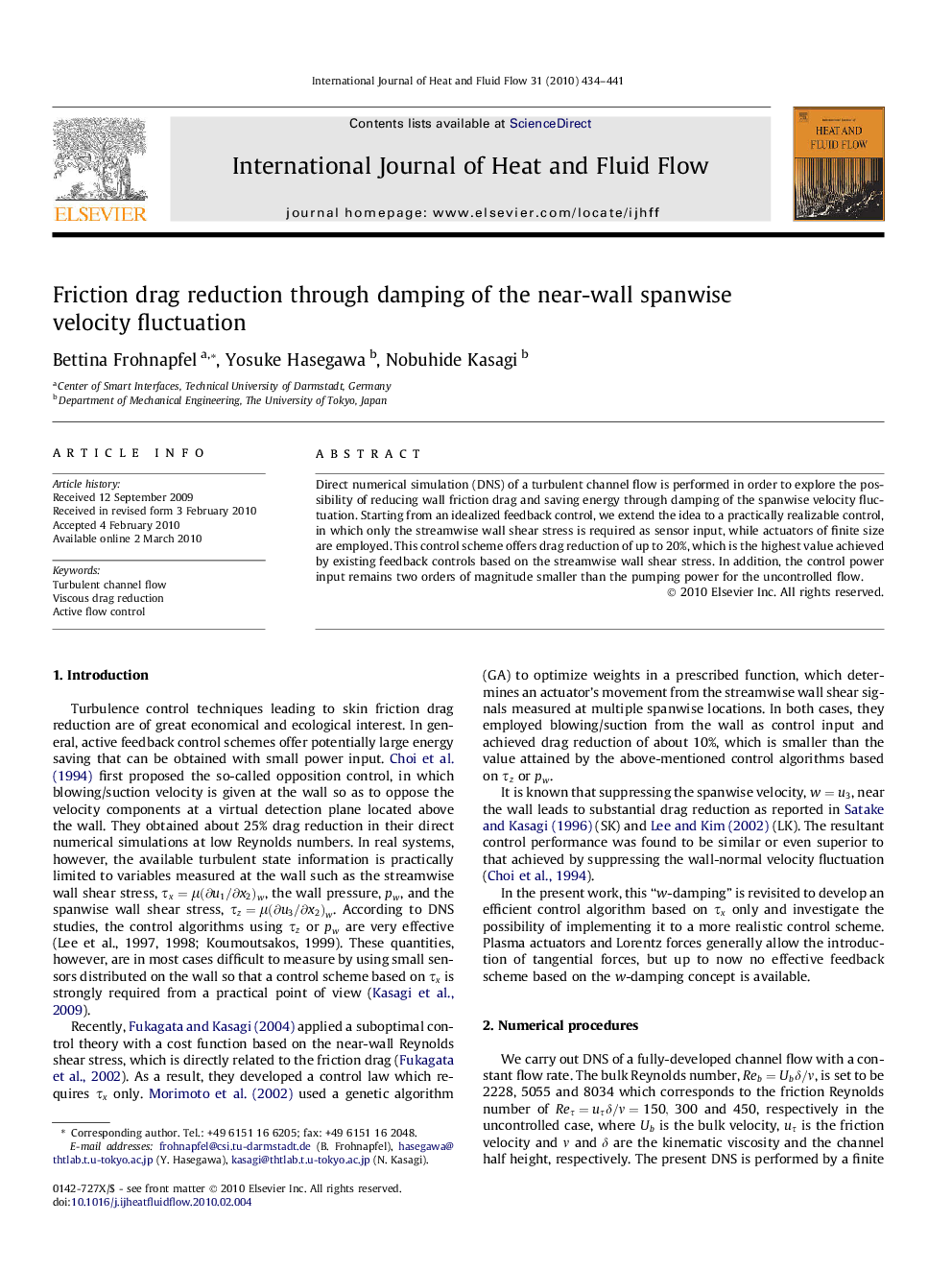| Article ID | Journal | Published Year | Pages | File Type |
|---|---|---|---|---|
| 655465 | International Journal of Heat and Fluid Flow | 2010 | 8 Pages |
Abstract
Direct numerical simulation (DNS) of a turbulent channel flow is performed in order to explore the possibility of reducing wall friction drag and saving energy through damping of the spanwise velocity fluctuation. Starting from an idealized feedback control, we extend the idea to a practically realizable control, in which only the streamwise wall shear stress is required as sensor input, while actuators of finite size are employed. This control scheme offers drag reduction of up to 20%, which is the highest value achieved by existing feedback controls based on the streamwise wall shear stress. In addition, the control power input remains two orders of magnitude smaller than the pumping power for the uncontrolled flow.
Related Topics
Physical Sciences and Engineering
Chemical Engineering
Fluid Flow and Transfer Processes
Authors
Bettina Frohnapfel, Yosuke Hasegawa, Nobuhide Kasagi,
